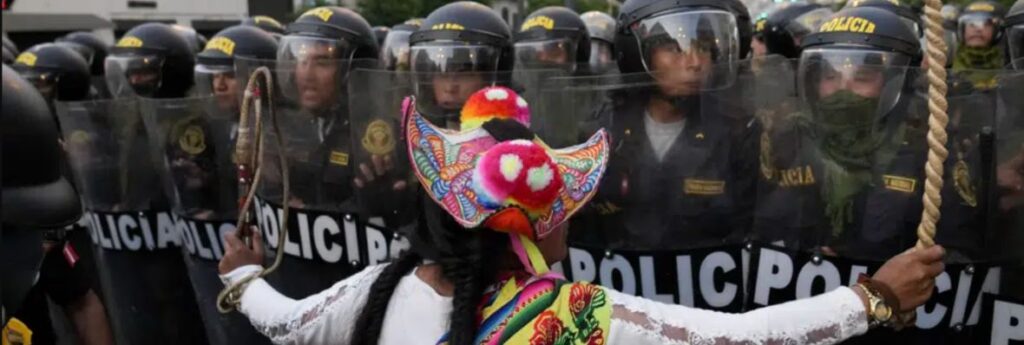Political turmoil is nothing new in Peru, which has seen six presidents in the last five years. But the scale of violence following President Pedro Castillo’s Dec. 7 impeachment and arrest for a clumsy effort to shutter Congress – unrest that has left 57 people dead and hundreds more injured – has revived class and racial divisions and thrown a wrench into Peru’s important tourism industry.
In December – as the political crisis got underway – the number of foreigners arriving in Peru had already fallen to the lowest level since 2000, aside from the two years lost to COVID-19.
So, is it safe to travel to the South American country? Here’s what you need to know:
Protests
Demonstrations are currently occurring in certain parts of the country – including the capital, Lima – as recently as late last week. The Peruvian National Police are currently in control of policing the country with the support of the Armed Forces. Certain parts of the country are currently more apt to demonstrations, such as southern Peru, including Cusco, Paracas, Ica, Puno, and Arequipa.
State of emergency
At the beginning of February government expanded and prolonged a state of emergency including seven southern regions – Madre de Dios, Cusco, Puno, Apurímac, Moquegua, and Tacna. The measures currently include Lima.
Are the airports open?
For now, Peru’s main airport in Lima is open, though only ticketed passengers with scheduled flights can enter the terminals, with the exception of minors and others who require special assistance. Several airports throughout the country have paused operations at various times during the protests.
In the case of the Alfredo Rodríguez Ballón International Airport in Arequipa, as of Feb. 8, the opening hours were restored from 6 a.m. to 10 p.m.
The Inca Manco Cápac International Airport, located in the city of Juliaca in Puno, remains closed until further notice.
Are tourist attractions open?
The main tourist attractions in the north and east zones of Peru, as well as the circuit of northern beaches, are fully opened. Ica region’s tourist attractions and national reserves are also opened.
And what about Machu Picchu?
Officials have temporarily closed Machu Picchu and the Inca Trail until further notice. Those who currently have tickets to Machu Picchu will be able to use them up to one month after peace is restored, or can request a refund by contacting ingresos@cultureacusco.gob.pe.
It should be noted that the Inca Trail typically closes in February for maintenance.
Are there tour operators currently operating in the country?
In general, tourist attractions are open to the public and tour operators are working normally. However, in the case of those located in southern and southeastern regions of the country, they could have limitations on receiving tourists due to the interrupted transit on some roads. In relation to visits to the main tourist attractions, the Lambayeque beach circuit and other provinces of the region are receiving visitors. Regarding the Ica region, the main tourist attractions and National Reserves have been operating normally.
Toronto-based G Adventures says it has cancelled all of its departures in the country until at least Feb. 19.
Are trains running?
Railway operations in the South and Southeast of the country, Ferrocarril Trasandino S.A., will continue to be suspended on the stretch of Cusco-Juliaca-Puno and Juliaca-Imata-Pillones-Arequipa of the Southern railway. Railway operations on the Cusco-Ollantaytambo-Machupicchu-hydroelectric route and the branch to Urubamba have also been suspended.
Are the cruises in the Amazon currently operating?
Cruises in the Amazon are operating normally. Currently, Iquitos and surrounding tourist areas are receiving visitors.
What is the country doing for tourists who need assistance?
Peru has set up a Tourist Protection Network (an inter-institutional network) that maintains permanent communication with tour operators, tourism agencies and other related services, and works jointly with the Tourism Directorate of the National Police of Peru to help tourists as needed. Safe tourist corridors have also been created from the airports to historic centres in affected areas like Cusco, Arequipa, Puno, and Tacna.
Travel advice and warnings
• Peru’s tourism board suggests travellers download the Tourist Police Peru app, and have emergency numbers on hand, including the Central POLTUR at (01) 4601060 or IPERÚ via WhatsApp +51 944492314 (text only) or by phone (01) 574-8000; as well as the emails: proteccionalturista@mincetur.gob.pe and iperu@promperu.gob.pe.
• Canadians can check the government’s travel advice on Peru at travel.gc.ca. At press time, the site was advising Canadians to avoid non-essential to a wide range of destinations in the country including the departments of Arequipa; Cuzco, including the Sacred Valley and Machu Picchu; Ica; and Puno, “due to due to violent demonstrations related to the political situation.”
• As of Feb. 9, the US State Department was similarly advising Americans to reconsider travel to Peru and exercise increased caution due to civil unrest.

